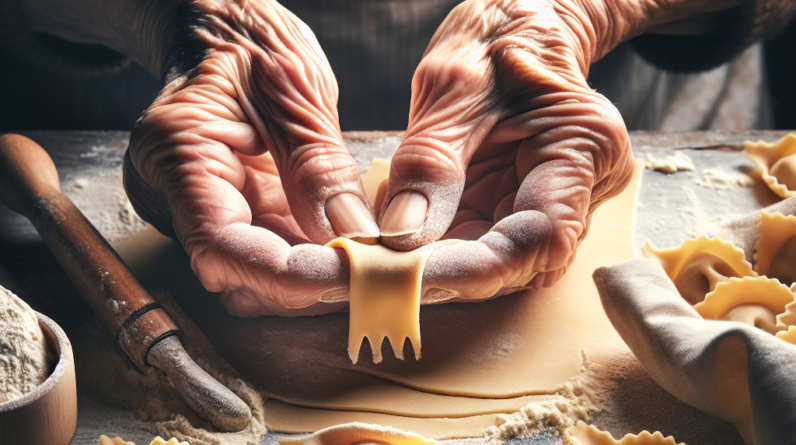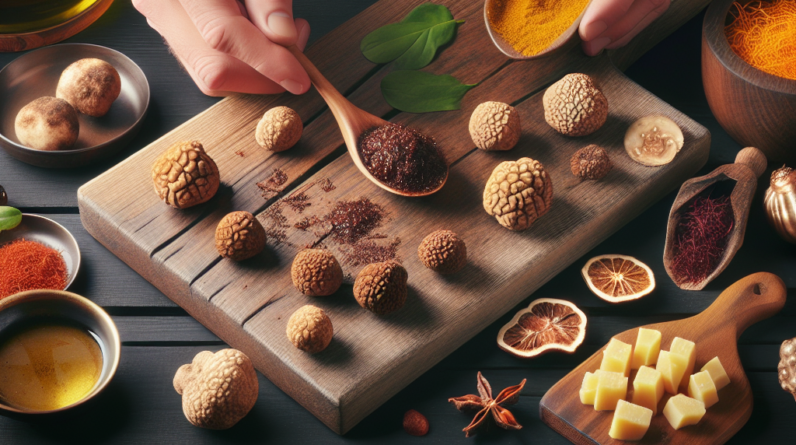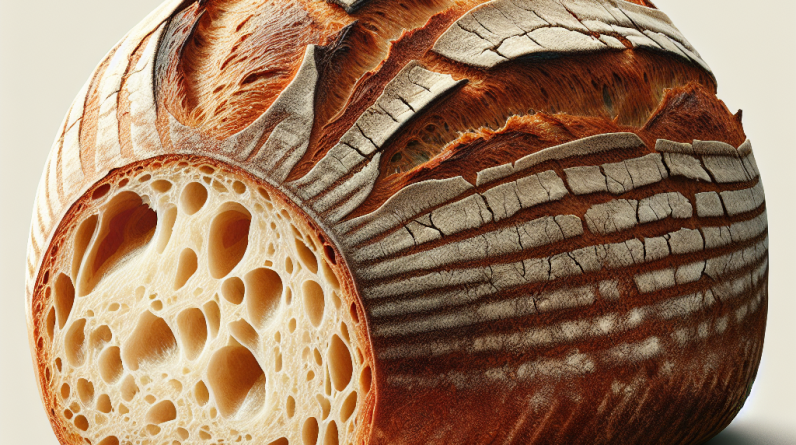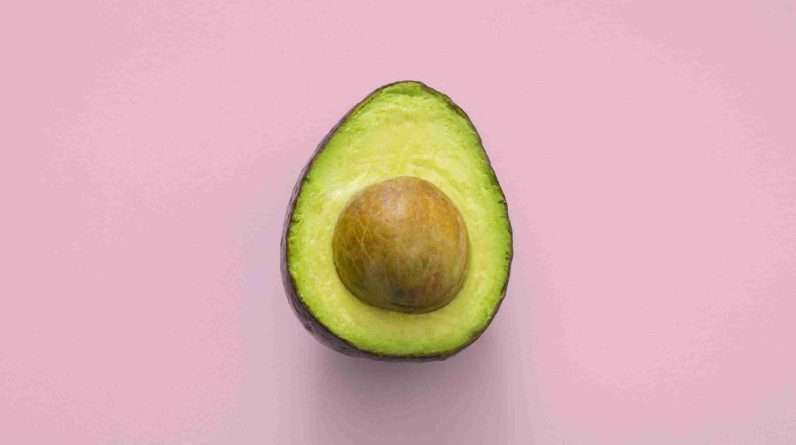If there’s one thing we can never resist, it’s the vibrant flavors of Italian cuisine. And while we may have conquered the art of cooking pasta to perfection, tackling Italian vegetables like broccoli rabe or escarole might seem like a whole different ballgame. But fear not, because we’re here to guide you through the process of cooking and seasoning these delectable greens so you can transport your taste buds straight to the streets of Italy. So grab your apron and let’s dive into the world of Italian veggie delights!

Choosing the Right Vegetables
When it comes to cooking Italian vegetables, choosing the right ones is essential for a delicious and authentic dish. Two popular options are broccoli rabe and escarole.
Broccoli Rabe: Broccoli rabe, also known as rapini, is a leafy green vegetable with small broccoli-like florets. It has a slightly bitter taste and is a staple in Italian cuisine. When selecting broccoli rabe, look for fresh, vibrant green leaves and firm stalks.
Escarole: Escarole is a variety of endive that has broad, curly leaves. It has a slightly bitter and peppery flavor, which becomes milder when cooked. Choose escarole with crisp, unblemished leaves for the best flavor and texture.
In addition to broccoli rabe and escarole, there are other Italian vegetables that are worth exploring. These include vegetables like radicchio, fava beans, and artichokes. Each vegetable offers a unique flavor profile and can be incorporated into a variety of dishes.
Preparing the Vegetables
Before cooking Italian vegetables, it is important to properly prepare them to ensure optimal taste and texture. Here are the steps to follow:
Cleaning and Washing: Start by rinsing the vegetables under cold water to remove any dirt or debris. Gently shake off excess water and pat dry with a clean kitchen towel.
Trimming and Cutting: For broccoli rabe, trim off the tough ends of the stalks and remove any yellowed or wilted leaves. Cut the bunch into manageable-sized pieces. As for escarole, discard any damaged or discolored leaves and cut off the tough stem at the base. Separate the leaves and tear them into smaller, bite-sized pieces.
Blanching or Steaming: Blanching or steaming the vegetables can help to preserve their vibrant color, enhance their texture, and reduce any bitterness. To blanch, bring a pot of salted water to a boil and add the vegetables. Cook for a few minutes until they become bright green and slightly tender. Then, immediately transfer them to an ice bath to stop the cooking process. To steam, place the vegetables in a steamer basket over boiling water and cook until tender.
Draining and Drying: After blanching or steaming, drain the vegetables well to remove excess moisture. You can gently press them with a clean kitchen towel or use a salad spinner to remove any excess water. Dry vegetables are better suited for cooking as they will achieve a golden and crisp texture when sautéed or roasted.
Cooking Methods
Italian vegetables can be prepared using various cooking methods, each bringing out different flavors and textures. Here are some popular cooking methods for Italian vegetables:
Sautéing: Sautéing is a quick and versatile cooking method that works well with both broccoli rabe and escarole. In a hot skillet, add olive oil and garlic, and sauté the vegetables until they are wilted and slightly browned. This method helps to bring out the natural sweetness of the vegetables and infuse them with the flavors of garlic and olive oil.
Boiling: Boiling is a simple and straightforward method that works well for vegetables like broccoli rabe. Bring a pot of salted water to a boil, add the vegetables, and cook until they are tender. Be sure to monitor the cooking time closely to avoid overcooking and losing the vibrant color and texture.
Roasting: Roasting vegetables is a great way to intensify their flavors and bring out their natural sweetness. Toss the vegetables with olive oil, salt, and pepper, and spread them out on a baking sheet. Roast them in a preheated oven until they are caramelized and tender. This method is particularly delicious for broccoli rabe and other hearty Italian vegetables.
Grilling: Grilling vegetables adds a smoky and charred flavor that complements the bitterness of vegetables like broccoli rabe and escarole. Brush the vegetables with olive oil and season them with salt and pepper. Place them on a preheated grill and cook until they are slightly charred and tender. This method is perfect for a summery side dish or a flavorful addition to salads.
Flavorful Seasonings
To elevate the taste of Italian vegetables, it is crucial to incorporate flavorful seasonings. Here are some common seasonings used in Italian cooking:
Garlic: Garlic is a staple in Italian cuisine and adds a pungent and savory flavor to dishes. Crush or mince garlic cloves and sauté them in olive oil before adding the vegetables. The aroma of garlic will infuse the vegetables with a delicious taste.
Olive Oil: Olive oil is a quintessential ingredient in Italian cooking and adds richness and depth to the flavors of vegetables. Use extra virgin olive oil for its distinct flavor and drizzle it over the cooked vegetables for a glossy finish.
Red Pepper Flakes: Red pepper flakes add a touch of heat and spice to Italian vegetables. Sprinkle them lightly over sautéed or roasted vegetables for a kick of flavor. Adjust the amount according to personal preference.
Lemon Juice: Lemon juice adds a refreshing and tangy taste to Italian vegetables. Squeeze fresh lemon juice over the cooked vegetables just before serving to brighten the flavors.
Parmesan Cheese: Parmesan cheese provides a salty and nutty flavor that pairs well with Italian vegetables. Grate some Parmesan cheese over the cooked vegetables for an extra burst of savory goodness.
Salt and Pepper: Simple yet essential, salt and pepper enhance the natural flavors of the vegetables. Season the vegetables with salt and pepper throughout the cooking process to bring out the best taste.

Complementary Ingredients and Pairings
To create a well-rounded and flavorful Italian vegetable dish, consider incorporating complementary ingredients and pairings. These ingredients can add depth and complexity to the dish. Here are some popular options:
Pine Nuts: Toasted pine nuts add a crunchy texture and nutty flavor to Italian vegetables. Sprinkle them over sautéed or roasted vegetables for an extra element of taste.
Raisins: Sweetness from raisins can balance out the bitterness of vegetables like escarole. Add a handful of raisins during the cooking process to infuse the dish with a touch of sweetness.
Anchovies: Anchovies are a common ingredient in Italian cuisine and can add a salty and savory punch to vegetable dishes. Chop a few anchovies and sauté them with garlic before adding the vegetables for a robust flavor.
Cherry Tomatoes: Cherry tomatoes provide a burst of juicy sweetness that complements the bitterness of Italian vegetables. Roast them alongside the vegetables or toss them in at the end for a pop of color and flavor.
Italian Sausage: Italian sausage is a classic pairing with Italian vegetables like broccoli rabe. The rich and flavorful sausage adds depth and richness to the dish when cooked alongside the vegetables.
Cannellini Beans: Cannellini beans are a popular addition to Italian vegetable dishes, as they offer a creamy texture and mild flavor. They can be cooked and added to soups, stews, or sautéed dishes for a heartier meal.
Traditional Italian Recipes
Italian cuisine is rich in traditional recipes that showcase the flavors of Italian vegetables. Here are a few classic recipes to try:
Broccoli Rabe with Garlic and Olive Oil: Sauté garlic in olive oil until fragrant, then add blanched broccoli rabe. Stir-fry until the vegetables are tender and coated in the flavors of garlic and olive oil.
Escarole and White Bean Soup: Combine escarole with white beans, onions, garlic, and vegetable stock. Simmer until the flavors meld together, and serve with a drizzle of olive oil and Parmesan cheese.
Sautéed Escarole with Anchovies and Raisins: Sauté garlic and anchovies in olive oil until the flavors meld. Add escarole and raisins, and stir-fry until the leaves are wilted and the raisins have plumped up.
Broccoli Rabe and Sausage Pasta: Sauté Italian sausage with garlic until browned, then add blanched broccoli rabe and cooked pasta. Toss everything together and top with grated Parmesan cheese.
Roasted Italian Vegetables with Balsamic Glaze: Toss a combination of Italian vegetables like broccoli rabe, cherry tomatoes, and artichoke hearts with olive oil, salt, and pepper. Roast in the oven until caramelized and drizzle with balsamic glaze before serving.

Tips and Tricks
To make the most of your Italian vegetable cooking experience, here are some tips and tricks:
Avoid Overcooking: Italian vegetables are best enjoyed when they are slightly tender and still retain their vibrant color. Be mindful of cooking times and avoid overcooking, as this can result in mushy and dull vegetables.
Enhance Flavor with Herbs: Experiment with fresh herbs like basil, parsley, or rosemary to add an extra layer of flavor to your Italian vegetable dishes. Chopped herbs can be added during cooking or used as a garnish.
Experiment with Combinations: Don’t be afraid to mix and match different Italian vegetables to create unique and flavorful dishes. Combining various textures and flavors can result in a delightful and memorable meal.
Using Leftover Vegetables: Leftover Italian vegetables can be repurposed in various ways. Consider adding them to frittatas, pasta salads, or even as a topping for homemade pizzas.
Storing Cooked Italian Vegetables: Cooked Italian vegetables can be stored in airtight containers in the refrigerator for up to 3-4 days. They can be reheated and enjoyed as a side dish or used to create new culinary creations.
Health Benefits
In addition to their delicious taste, Italian vegetables also offer numerous health benefits. Here are some key advantages:
Nutritional Profile: Italian vegetables like broccoli rabe and escarole are low in calories and high in vitamins and minerals. They are an excellent source of vitamin A, vitamin C, calcium, and iron, among other nutrients.
Rich in Vitamins and Nutrients: Italian vegetables provide essential vitamins and nutrients that support overall health and well-being. They are rich in antioxidants, fiber, and phytonutrients, which contribute to a balanced and nutritious diet.
Digestive Health: The high fiber content in Italian vegetables aids in digestion and promotes a healthy gut. Regular consumption of these vegetables can help prevent constipation and promote regular bowel movements.
Anti-Inflammatory Properties: Many Italian vegetables, such as broccoli rabe and escarole, contain anti-inflammatory compounds that help reduce inflammation in the body. This can contribute to improved overall health and a decreased risk of chronic diseases.
Conclusion
When it comes to cooking Italian vegetables like broccoli rabe and escarole, it’s important to choose the right vegetables, prepare them properly, and utilize various cooking methods to bring out their flavors. By incorporating flavorful seasonings, complementary ingredients, and following traditional recipes, you can create delicious and nutritious meals. With these tips and tricks in mind, you can confidently explore the world of Italian vegetable cuisine, knowing that you are bringing the vibrant flavors of Italy into your own kitchen.










